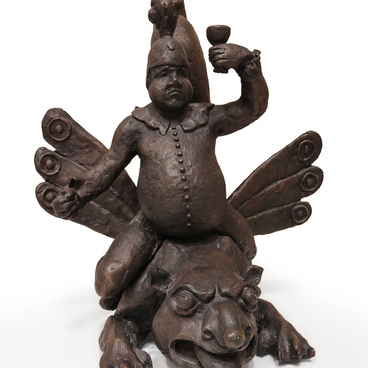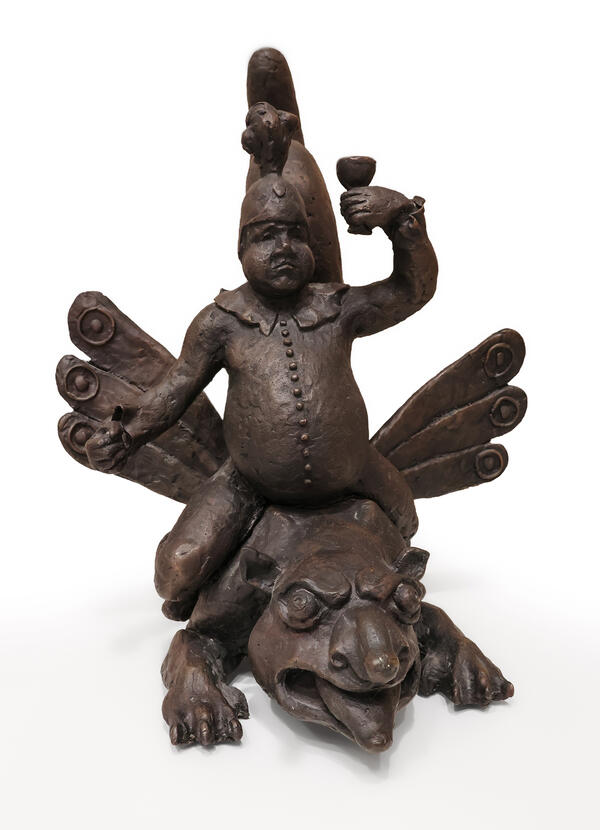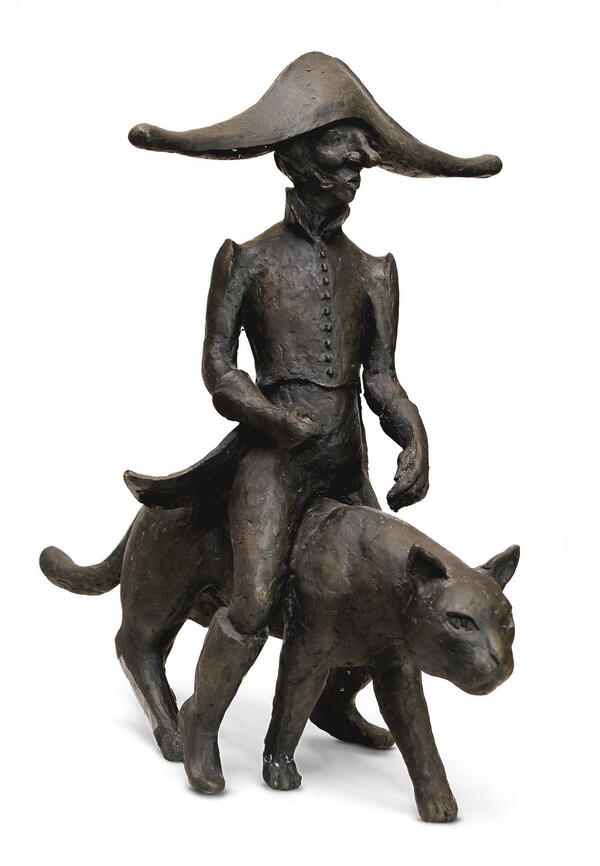The museum’s exhibition features a sculpture of Ernst Theodor Amadeus (Wilhelm) Hoffmann (1776–1822), a native of Königsberg, German romantic writer, storyteller, composer, painter and lawyer. Out of adoration for his favorite composer Wolfgang Amadeus Mozart, the writer changed the name “Wilhelm” to “Amadeus” in 1805, and in 1809 signed one of his works with it for the first time.
The sculptural image of Hoffmann was created in 2010 by Sergey Arishchenko, a native of Kaliningrad. He graduated from the Belarus State Academy of Arts in 2009. The artist also completed the design of the monument to the writer, but it was never installed in the city. The sculpture was cast in bronze in Kaliningrad and presented for the first time as part of the annual art and exhibition project “Hoffmaniana”.
The sculpture of Ernst Theodor Amadeus Hoffmann is a full-height figure consisting of two separate parts, which symbolize the duality of the nature and destiny of the German writer. From one side, the viewer sees a lawyer in a strict suit with a cylinder. In his hands is a scroll, and in the hollow of his cloak there is a huge rat sitting on a stack of books. From the other side, the viewer sees a creative person in a tailcoat with a shirt-front. The figure holds a violin in his hands, and at his feet is a cat, the main character of “The Life and Opinions of the Tomcat Murr”.
In his time, German critics had a low opinion of Hoffmann. The writer gained much more popularity in other European countries. In the Russian Empire, the literary critic and publicist Vissarion Grigorievich Belinsky called Ernst Hoffmann “one of the greatest German poets” and considered him “a painter of the inner world”. It is known that Russian writer Fyodor Mikhailovich Dostoevsky read all of Hoffmann both in Russian translation and in the original language.
During his lifetime,
Ernst Theodor Amadeus Hoffmann composed two novels, as well as more than seven
dozen novels and short stories. He masterfully illustrated his own works.
Hoffmann was interested not only in music and literature, but also in painting,
especially landscape painting.





